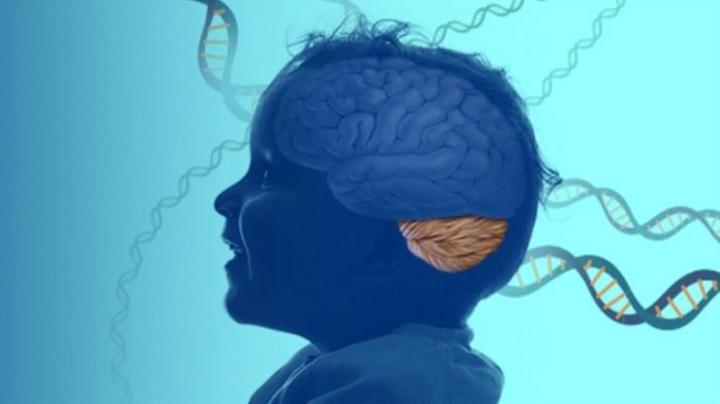Dr Trevor Clark, National Director of Aspect Research Centre for Autism Practice, explains what savant skills and twice exceptional (2e) mean, and how these terms relate to people on the autism spectrum with Orion Kelly.
Get the latest international news and world events from around the world.
How Social Media Addiction Destroys Your Brain
The rise of social media has changed our day to day lives. But more and more reports show that social media and especially social media can impact our brain. Social media addiction might also to a decline in mental health. How does social media changes us? And are the effects by social media addiction reversal?
🔬 Subscribe for more awesome biomedical research: https://bit.ly/2SRMqhC
📸 IG: instagram.com/clemens.steinek.
🔬Twitter: https://twitter.com/CSteinek.
Social media has been developed to connect people. However, quite early, scientists found that social media (and social media addiction) can lead to changes in the brain such an enlarged amygdala. First reports surfaced showing that people compare their lives to lives they see on social media and report a decline of mental health upon heavy social media use. It seems like our brains cannot distinguish between social media and the real world. Social media also led to an attention span crisis meaning that we have a harder time to focus if we spend much time on social media. Moreover, social media is able to feed into the reward system of our brains. Everytime we perceive something good dopamine producing cells in the brain release dopamine which leads to a good feeling. Social media has used this mechanism to provide us with a constant stream of good feelings. Social media algorithms have been optimize to show more social media content in a shorter period of time leading to more dopamine. As a result, some argue that social media addiction should be recognized as a mental disorder.
Besides negatively impacting our brains on an individual level social media and social media addiction also impacts society. Last year, a sharp rise in tic symptoms have been reported among teenagers in the US. It seems like that tic-related content on tiktok together with anxiety caused by the COVID-19 pandemic led to this rise in tic-like symptoms. So what should we do about social media? And how can we ensure that our brains are not negatively impacted by the constant stream of dopamine? Well, sometimes the best thing is just to avoid social media for a while.
References:
https://www.ncbi.nlm.nih.gov/pmc/articles/PMC6502424/
https://fortune.com/2022/03/31/teen-girls-tourette-tics-tiktok/
https://onlinelibrary.wiley.com/doi/full/10.1111/jpc.15932
https://www.sciencedirect.com/science/article/pii/S0960982214014870
https://onlinelibrary.wiley.com/doi/abs/10.1111/adb.12570
https://www.pnas.org/doi/abs/10.1073/pnas.0903620106
https://www.nature.com/articles/nn.2724?luicode=10000011&lfi.…2724.html.
https://psycnet.apa.org/record/2018-22977-002
https://www.liebertpub.com/doi/full/10.1089/cyber.2021.0324
https://link.springer.com/article/10.1007/s40519-017-0364-2
https://www.tandfonline.com/doi/pdf/10.1080/02673843.2019.1590851
https://www.tandfonline.com/doi/abs/10.1080/00224545.2019.1578725
https://movementdisorders.onlinelibrary.wiley.com/doi/10.1002/mds.28778
https://www.liebertpub.com/doi/abs/10.1089/cyber.2018.0701
Images:
Most videos and images are derived from: pixabay.com, pexels.com and videvo.net.
How a Baseball Injury Made A Genius (Savant Syndrome)
Savant syndrome is a strange condition that gives people unique abilities. Although savant syndrome is very rare reported cases gain genius-like abilities in narrow domains. But how can we explain savant syndrome? And could we induce savant syndrome in normal people?
🔬 Subscribe for more awesome biomedical research: https://bit.ly/2SRMqhC
📸 IG: instagram.com/clemens.steinek.
🔬Twitter: https://twitter.com/CSteinek.
Savant syndrome is characterized by unique skills in art, music, mechanics, calendar calculation or maths. Savant syndrome can be acquired through injuries or frontotemporal dementia or be developed in people with autism spectrum disorder. In acquired savant syndrome and autism spectrum disorder, unique connections in the brain led to the condition. In savant syndrome, we often find that the left hemisphere is damaged and the right brain hemisphere has to compensate for this. Based on this observation, we can partially induce savant syndrome like abilities through transcranial magnetic stimulation. Many questions concerning savant syndrome remain but this condition is truly amazing.
0:00–1:10 Intro.
1:10–1:56 What is Savant Syndrome?
1:56–4:02 Acquiring Savant Syndrome.
4:02–5:46 Savant Syndrome and Autism Spectrum Disorder.
5:46–8:39 Can we Induce Savant Syndrome?
Images:
How Exercise Creates Super-Brains
We all know that exercise is good for our health. But besides lowering the risk of obesity or type II diabetes, exercise has also been shown to benefit our brain. More precisely, exercise modifies parts of the brain and improves memory, attention and improves mood. Regular exercise further lowers the risk to suffer from dementia or depression. But how does exercise benefit our brains?
🔬 Subscribe for more awesome biomedical research: https://bit.ly/2SRMqhC
📸 IG: instagram.com/clemens.steinek.
🔬Twitter: https://twitter.com/CSteinek.
Philosophers have speculated for centuries that exercise promotes our brain functionality but only a few decades ago, scientists uncovered that this is true. Studies have shown that children who are more athletic perform better in creativity, concentration, maths verbal and IQ tests. These children also tend to have a larger hippocampus and basal ganglia both of which are important for memory and attention span. Adults who started to workout regularly also have changes in their brain and perform better in various tests. There are several mechanisms which explain this phenomenon. When we exercise, brain cells release VEGF which helps to supply the brain with oxygen. Moreover, neurotrophins are released when we workout which helps the survival of brain cells. Exercise also seems to improve neuroplasticity through the same pathways. Since exercise leads to the release of neurotransmitters such as serotonin, workouts also have been used to treat mental disorders such as depression. In various studies it was seen exercise helps to alleviate the symptoms of people who suffer from major depression.
The literature suggests roughly 150 minutes of moderate-intensity exercise or 75 minutes of vigorous-intensity exercise per week might be optimal to curb the risk of heart disease and 19 other chronic diseases. Concerning brain health, 120 minutes of moderate exercise a week might be enough to get all the benefits we have seen before. But even if you do less you might see a difference in the long run. In general, aerobic exercise seemed to have the best impacts on your brain. Jogging, running, swimming and all other forms of aerobic sports might give the benefits we have seen in this video!
References:
https://www.nature.com/articles/s41591-018-0275-4
https://www.pnas.org/doi/abs/10.1073/pnas.0905307106
https://pubmed.ncbi.nlm.nih.gov/20693803/
https://www.sciencedirect.com/science/article/abs/pii/S0025619616300477
https://www.frontiersin.org/articles/10.3389/fpsyg.2019.02658/full.
https://ajp.psychiatryonline.org/doi/pdf/10.1176/ajp.2007.164.2.350a.
https://www.health.harvard.edu/blog/regular-exercise-changes…1404097110
https://www.ncbi.nlm.nih.gov/pmc/articles/PMC2702700/pdf/nihms117644.pdf.
https://stanford.library.sydney.edu.au/archives/spr2020/entr…stPhilSpor.
https://www.frontiersin.org/articles/10.3389/fpsyt.2018.00762/full.
https://journals.sagepub.com/doi/full/10.1177/23259671211001129
https://www.frontiersin.org/articles/10.3389/fpsyg.2018.00509/full.
https://www.cdc.gov/nccdphp/dnpao/features/physical-activity-brain-health/
https://www.ncbi.nlm.nih.gov/pmc/articles/PMC6943756/pdf/main.pdf.
https://www.ncbi.nlm.nih.gov/pmc/articles/PMC5457513/pdf/ncomms15557.pdf.
https://positivepsychology.com/exercise-neurological-benefits/
00:00–00:53 Intro.

Generative AI may only be a foreshock to AI singularity
Check out all the on-demand sessions from the Intelligent Security Summit here.
Generative AI, which is based on Large Language Models (LLMs) and transformer neural networks, has certainly created a lot of buzz. Unlike hype cycles around new technologies such as the metaverse, crypto and Web3, generative AI tools such as Stable Diffusion and ChatGPT are poised to have tremendous, possibly revolutionary impacts. These tools are already disrupting multiple fields — including the film industry — and are a potential game-changer for enterprise software.
All of this has led Ben Thompson to declare in his Stratechery newsletter to declare generative AI advances as marking “a new epoch in technology.”

Turkey-Syria earthquake death toll likely to ‘more than double’, UN says
The death toll from the earthquake in Turkey and Syria is likely to “more than double”, according to a United Nations emergency relief coordinator.
Martin Griffiths, speaking to Sky News on Saturday, said he expected tens of thousands more deaths.
At least 24,596 people have been confirmed dead after the 7.8 magnitude earthquake struck southern Turkey and north-western Syria on Monday, with multiple aftershocks.

Bill Gates Reveals the Next Big Thing
The co-founder of Microsoft is convinced that artificial intelligence like ChatGPT will radically change our world.
Bill Gates has never been so excited.
The co-founder of software giant Microsoft is on the artificial intelligence bandwagon that has become the buzzword in the tech world in recent weeks.
The strange number 1/137 shows up everywhere in physics. What does it mean?
Does it have a deeper significance — or is it just a number? Unfortunately for physics enthusiasts, 1/137 is no more significant than 3.14.
Can Machine Learning Translate Ancient Egyptian Texts?
A new program aims to use AI to help academics and the public decipher hieroglyphs. Here’s an inside look at how—and whether—it works.

Scientists discover a rare neurological disease involving cellular recycling
The new disease could provide insights into how the cell’s recycling system contributes to a healthy brain. Researchers at the National Institutes of Health have discovered a new neurological condition characterized by issues with motor coordination and speech. They identified three children with the condition, two siblings and an unrelated child.